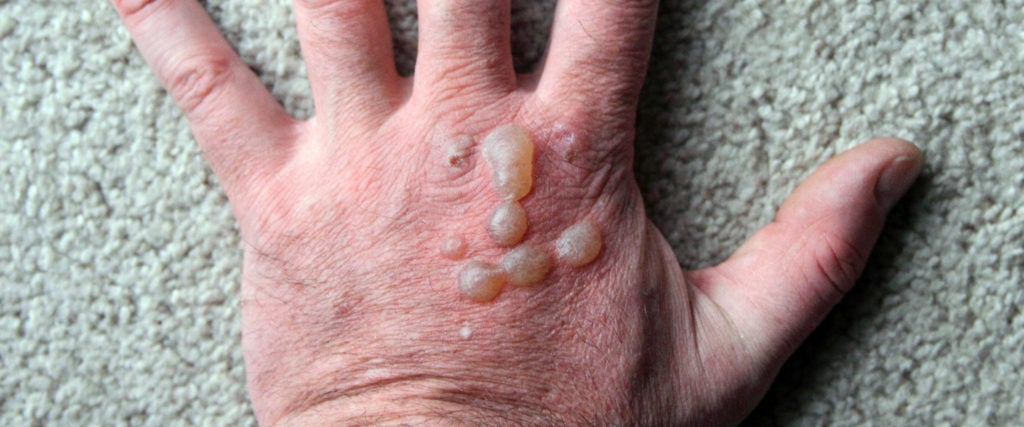In addition to a very cool mustache, my boyfriend has acquired newly scratchy, calloused hands during quarantine. They have become rough and blistered from repeated pull-ups and a 10-minute ab video he’s been doing on the floor. In most cases, hand blisters form from similar types of friction — e.g., gripping metal weights — or as a means of healing from irritation from extreme temperatures, sunburns or bug bites.
But weirdly enough, blisters can form almost spontaneously, too. Like eczema, some people are just prone to blisters for essentially no reason. This condition is broadly referred to as dyshidrosis, and often manifests in clusters of tiny blisters on the palms of hands and soles of feet. This can sometimes occur as an allergic reaction to certain metals like cobalt, or it can show up from stress or irritation to the skin.
In some cases, too, blisters might actually be a symptom of a virus or infection. Staph infections of the hand could lead to blisters, and herpes can indeed lead to contagious blisters on hands, as well. This, though, usually requires direct contact with an active case of herpes on genitals.
If you don’t suspect you’ve come into contact with herpes, formed a staph infection or gotten any kind of burn, there’s a good chance the blister on your hand has just formed from the aforementioned friction, the same way you might form a blister on your heel after wearing a new pair of shoes. Trying new workouts, carrying a heavy object or even just trying to bring all the groceries in from your car in one trip could easily be the culprit. Blisters can also form from irritation to chemicals in things like cleaning products or soaps, so it’s possible that something like scrubbing your bathroom is responsible, as well.
Odds are, your blister is nothing to worry about and will go away in a few days. In fact, while a blister can fill with blood or pus, they’re often filled with “serum,” a substance that leaks from the damaged tissue beneath the skin, which then pools in a sort of protective bubble. If this bubble doesn’t burst, the serum protects the damaged tissue and promotes healing.
The recommended course of treatment is simply to leave it alone. In the event your blister pops, wash it with gentle soap and water and wrap it up in a Band-Aid. An open blister can become infected, so, y’know, avoid that. Also, try not to be like my boyfriend, who is constantly scratching me with his calloused blister hands. Because trust me, they feel as bad as they look.

